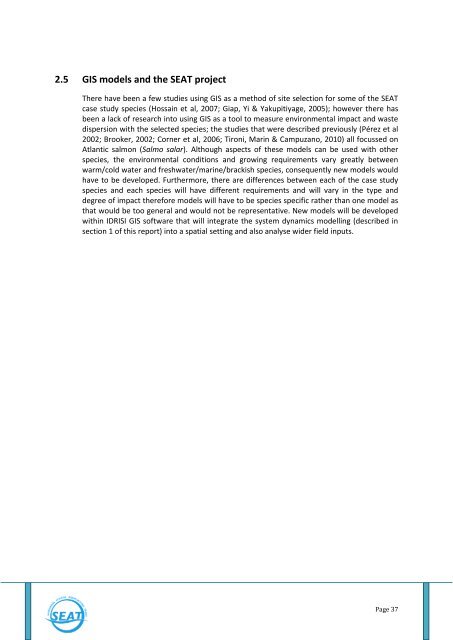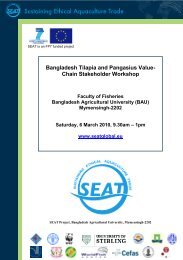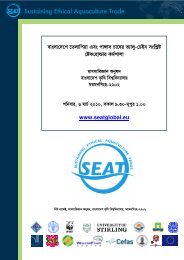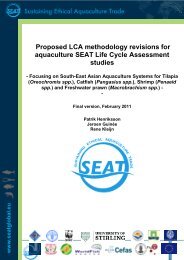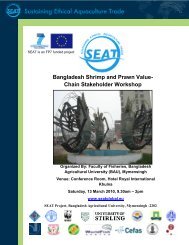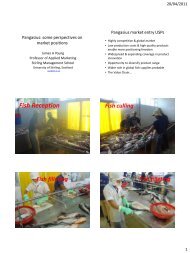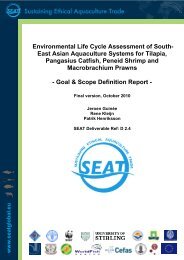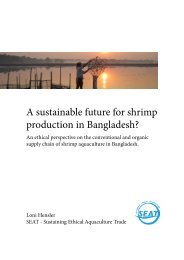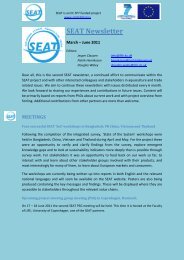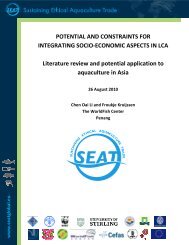D4.1 Review of Environmental Models - SEAT Global
D4.1 Review of Environmental Models - SEAT Global
D4.1 Review of Environmental Models - SEAT Global
Create successful ePaper yourself
Turn your PDF publications into a flip-book with our unique Google optimized e-Paper software.
2.5 GIS models and the <strong>SEAT</strong> project<br />
There have been a few studies using GIS as a method <strong>of</strong> site selection for some <strong>of</strong> the <strong>SEAT</strong><br />
case study species (Hossain et al, 2007; Giap, Yi & Yakupitiyage, 2005); however there has<br />
been a lack <strong>of</strong> research into using GIS as a tool to measure environmental impact and waste<br />
dispersion with the selected species; the studies that were described previously (Pérez et al<br />
2002; Brooker, 2002; Corner et al, 2006; Tironi, Marin & Campuzano, 2010) all focussed on<br />
Atlantic salmon (Salmo salar). Although aspects <strong>of</strong> these models can be used with other<br />
species, the environmental conditions and growing requirements vary greatly between<br />
warm/cold water and freshwater/marine/brackish species, consequently new models would<br />
have to be developed. Furthermore, there are differences between each <strong>of</strong> the case study<br />
species and each species will have different requirements and will vary in the type and<br />
degree <strong>of</strong> impact therefore models will have to be species specific rather than one model as<br />
that would be too general and would not be representative. New models will be developed<br />
within IDRISI GIS s<strong>of</strong>tware that will integrate the system dynamics modelling (described in<br />
section 1 <strong>of</strong> this report) into a spatial setting and also analyse wider field inputs.<br />
Page 37


